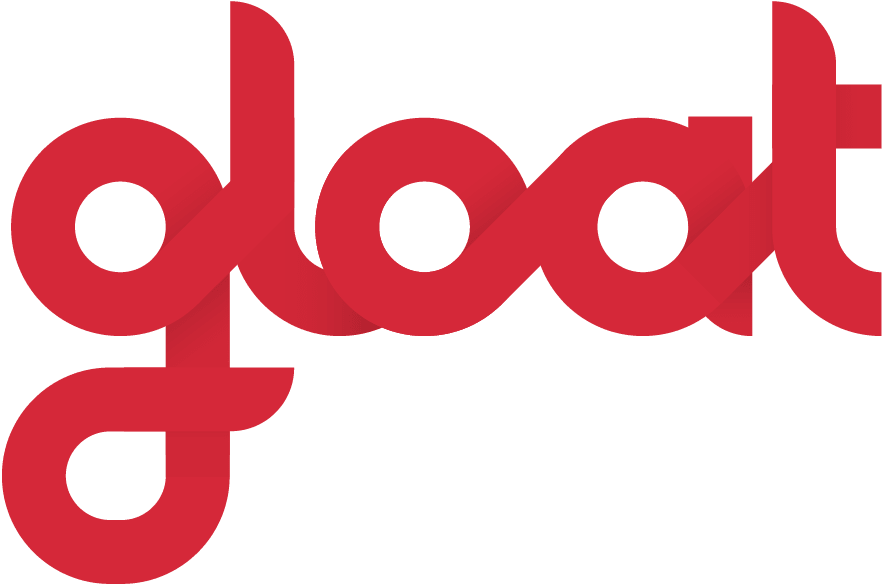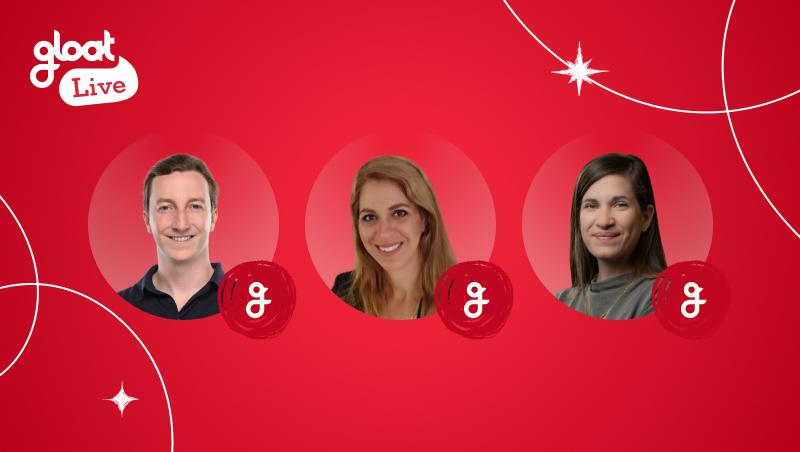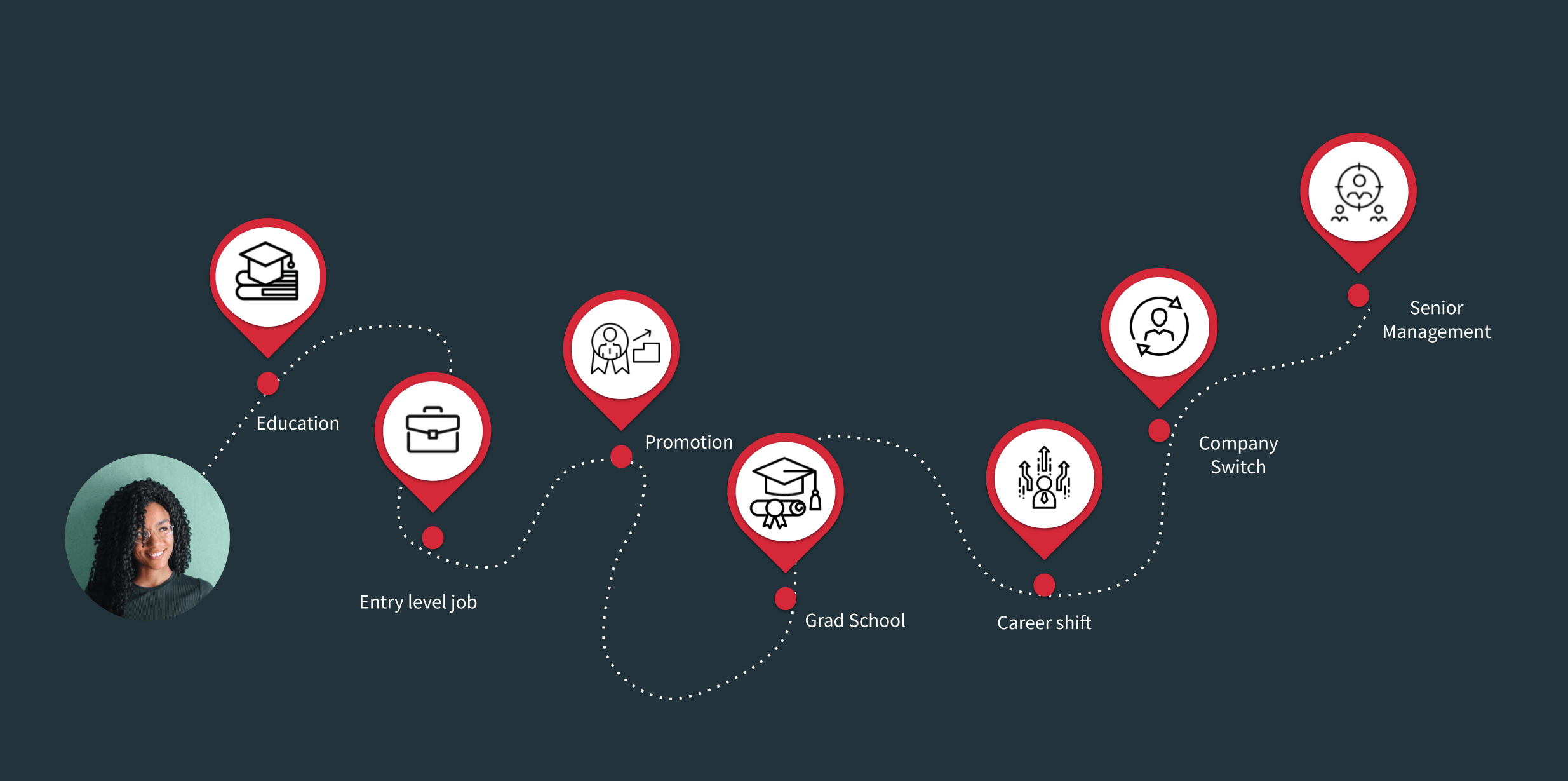AI Transformation Starts from Within: Seagate’s Playbook for the AI Age
Patricia Frost reflects on her organization’s journey to develop an AI-ready workforce with David Green, host of the Digital HR Leaders Podcast
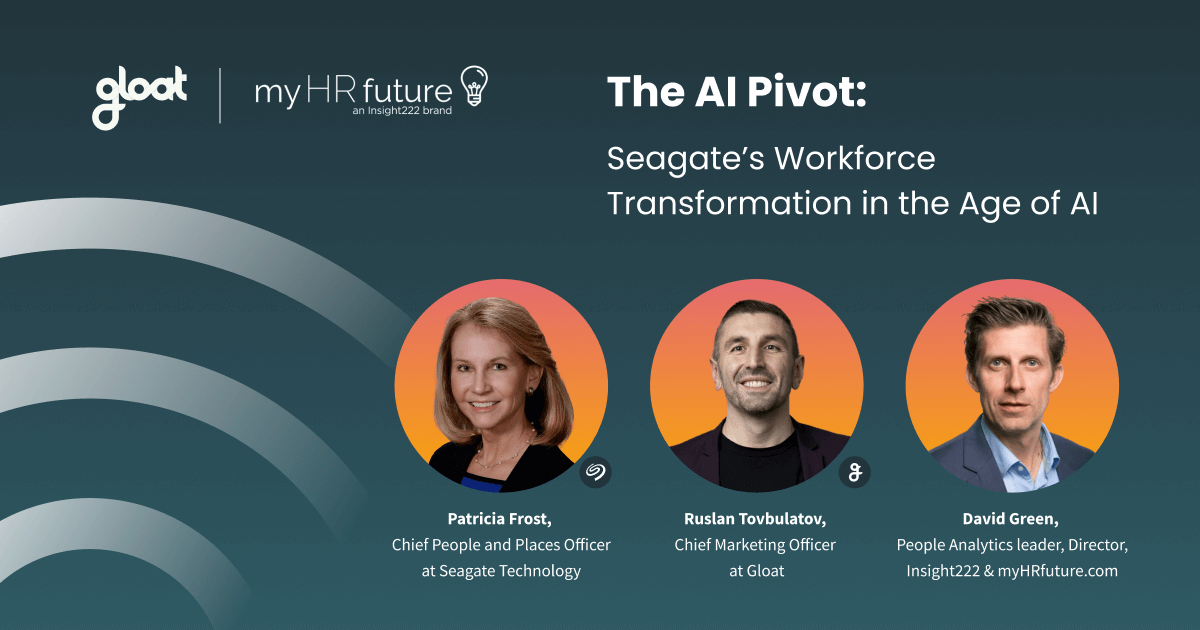
Two letters hold a commanding position on the CEO agenda: AI. But while 75% of executives list it as a top-three strategic priority for 2025, many acknowledge that they haven’t yet realized a tangible value from their AI and GenAI investments.
As the AI impact gap widens, leaders are vying to launch impactful transformation strategies so they can finally capitalize on AI’s full potential. While many of these initiatives are still in the planning stage, a handful of visionary organizations have already launched impactful AI transformations—and Seagate is one of them.
During a recent Digital HR Leaders podcast episode, the leading data storage solution provider’s Chief People and Places Officer Patricia Frost sat down with Gloat’s Chief Marketing Officer Ruslan Tovbulatov to discuss how her organization is reimagining the way they work for the AI era. Since the actionable advice they shared is too good to miss, we’re recapping the top takeaways every leader needs to spearhead a winning transformation strategy.
5 key takeaways from Seagate’s conversation on AI transformation
Whether you’re at the very beginning of your AI transformation or searching for ways to level up your initiative, Patricia and Rus’s conversation with podcast host David Green is filled with tried-and-true tips every leader can use throughout their journeys. The top takeaways from this must-hear discussion include:
#1. Win with the team you have
Instead of searching far and wide for external talent with in-demand AI skills, Patricia encourages leaders to look within their organizations first. “You go to war with the team you have,” the Army veteran says. “And you’re going to build on the strengths of that team. And that’s the sign of a good leader, that you’re developing, you’re growing, you’re looking for those opportunities.”
She goes on to emphasize the importance of reallocating talent across the organization so that leaders can tap into the expertise their entire workforce has to offer. “I could reach across to another function and pull someone with that skillset I need, but it’s still from within Seagate,” she explains. “And that’s really powerful. Your team appreciates it when they know you’re looking internally first, that you recognize their skills. Now it does require you as an individual to want to upskill, to continue to be that learner, be curious, be challenged. That’s what we’re going to hit in this new era of AI. Are you willing to learn a new way to work? It’s not taking away your job, you’re evolving how you do work.
#2. Culture will make or break your AI transformation
While developing the right digital infrastructure is crucial in our age of AI, technology isn’t the only component of a successful transformation. In fact, cultivating a dynamic culture that empowers every member of your workforce to grow and adapt is just as critical, as Rus discusses. “The world is changing so much…so I think that mindset of agility and adaptability is so important for anyone on this journey. And Patricia has driven that at Seagate in spades, and I encourage everyone to think about progress over perfection—especially in an AI world.
Building on this sentiment, Patricia emphasizes the importance of encouraging people at all levels of your organization to actively participate in your AI transformation. “It’s the power of us. It’s the power of every one of my employees to say ‘You are going to rewrite how you work.’ This is not going to be pushed down from on high, we’ll do it bottoms up. How do you look at your workflow? What are the tasks you need to get done? Where can AI assist you? Where is it truly the human that does the work? And let’s rewrite our organizations and how we work.”
#3. The right systems and use cases matter more than the number of tools
When it comes to introducing new systems, quality should always come before quantity. “The answer isn’t just throwing more agents or more technology at the problem,” Rus says. “I think actually HR might have a [similar issue to external hiring] to think, ‘Oh, we’ll just get more agents or more technology.’ The key for us and how we’re thinking about it is, how do you empower the talent you have and the people you have to wield this incredible superpower they’ve been given with AI.”
Rather than viewing new tools as belonging to a specific team or function, Patricia encourages leaders to roll out systems that empower employees across the organization, which is exactly how Seagate views its Gloat-powered platform, TalentLink. “This is not an HR tool. This is an employee tool, this is a people-leader tool. This empowers the individual and empowers the people manager. It’s not something that sits very exquisitely over in the HR world…This is truly to empower down to our most junior employee, up to the top leader, to see the organization, but to allow everyone to see themselves, to have long and very, hopefully, prosperous careers at Seagate.”
#4. Failure isn’t the enemy; stagnancy is
Shifting the way your organization works to thrive in the age of AI requires experimentation—and failure, in some cases, as Patricia explains. “I think we have to rewrite how we come to work. And I think companies, we have to be willing to fail, we have to be willing to not get it right the first time. But I always go back to what problem are we trying to solve? What technology are we going to try to use to solve it? After a year, if it doesn’t work, toss it out and go try something else, right?”
Looking ahead, Patricia shares her ambitions for 2026, noting, “I’m hoping Seagate will be an AI-driven company in a year.” While she’s hopeful that they’ve developed AI-driven leaders and employees, she acknowledges that learning from your mistakes and figuring out what resonates is critical to the long-term success of your initiative. “You have to be willing to fail too. Like how many times do we add an app to our phones and if within the first 15 minutes the app doesn’t give us the right experience, we delete it? Well, employees will do that with AI tools we roll out. So…we have to do those face-to-face sessions so [employees] can feel the power of what it is.”
#5. Human-AI collaboration will shift growth from incremental to exponential
While navigating an AI transformation can be challenging, the rewards make it all worth it. “This is real work, like billions of dollars of productivity being unlocked, because you have people coming together to literally launch new products,” Rus explains. “In the pharma space, we’ve seen a project team actually come together to launch a new drug on our platform.”
Deep diving further into Gloat’s platform, Rus shares an innovation we recently unveiled that will enable businesses to achieve outsize results by turning every employee into an orchestrator of human and AI capabilities. “What we’re building, called Mosaic, is this new offering where it’s taking the best of the talent marketplace. So, you see the skills, the ontology of skills, the ontology of the talent and the work, but also technology. We really fundamentally believe that humans have to be the orchestrators of this. You almost have an orchestra. We believe humans are the conductors, but all of this is going to supercharge them.”
Want to learn more about Mosaic and how individual contributors can turn into exponential contributors with the help of AI? Check out our Product Keynote from Gloat Live to learn about our latest product innovations and how leading organizations like Seagate are using them.
